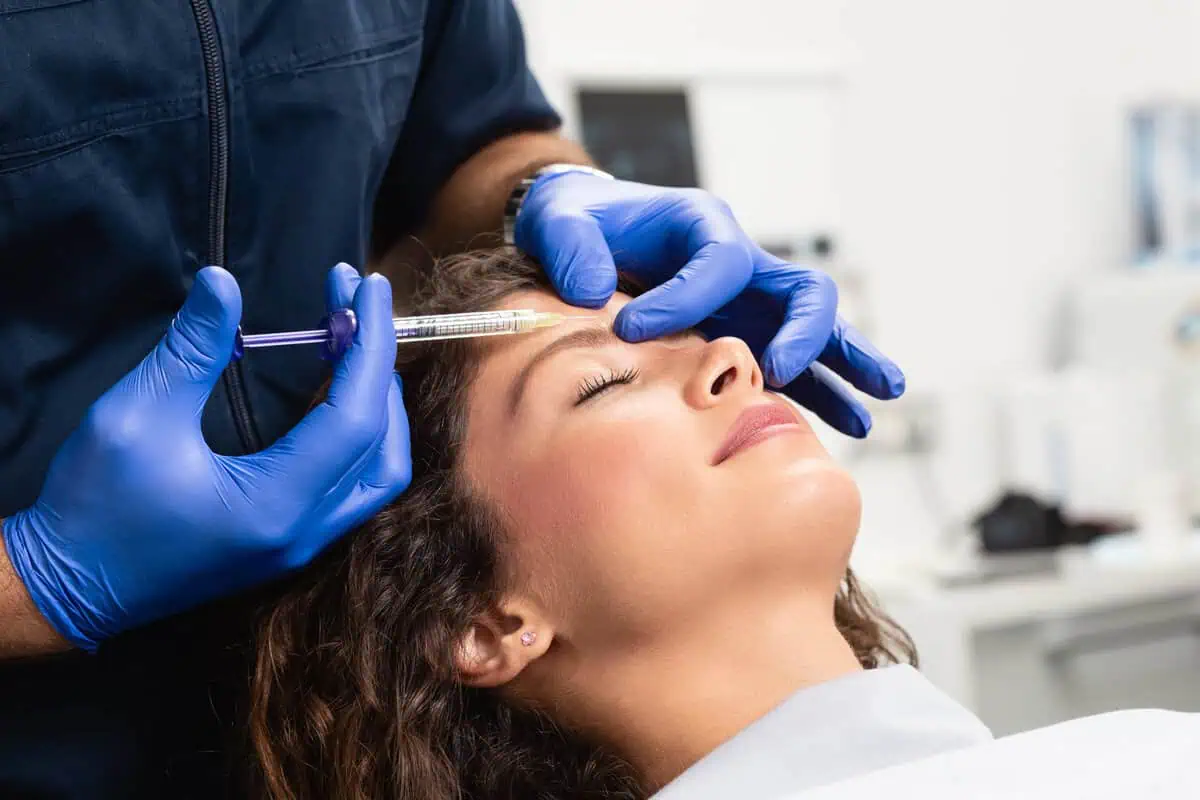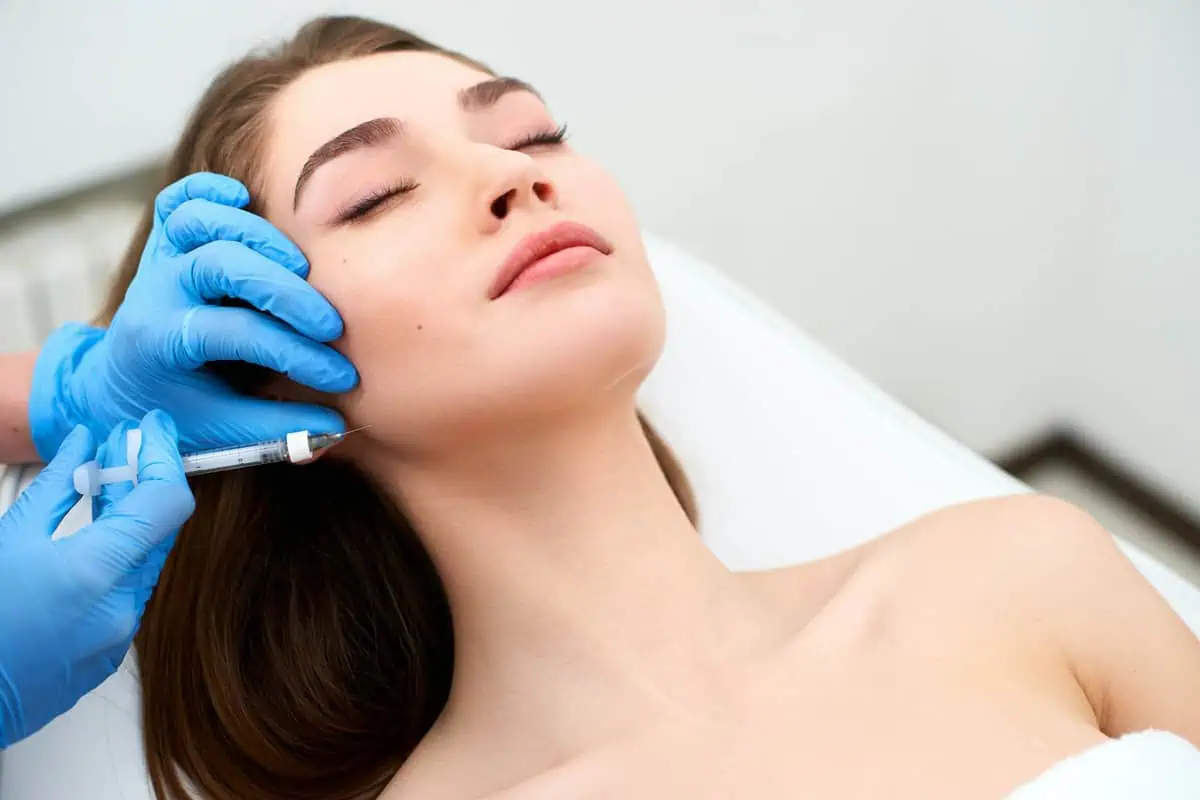Two of the most popular non-surgical cosmetic treatments for reducing wrinkles and fine lines are Botox® and Dysport®. Both treatments are designed to provide a more youthful appearance, but some differences can make one more suitable for you than the other.
Deciding between Dysport® and Botox® involves considering several factors such as effectiveness, cost, duration of results, and potential side effects. This guide will help you understand these aspects in detail so you can make an informed decision.
What is Botox?
Botox® is a brand name for a neurotoxin produced by the bacterium Clostridium botulinum. It is widely used in medical and cosmetic fields to paralyze muscles temporarily. In cosmetic applications, Botox® is injected in small, controlled doses to reduce the appearance of dynamic wrinkles such as frown lines, crow’s feet, and forehead lines. By blocking nerve signals in the targeted muscles, Botox® prevents them from contracting, resulting in smoother skin and a more youthful appearance.
Medically, Botox® is utilized to treat a variety of conditions, including chronic migraines, muscle spasms, excessive sweating (hyperhidrosis), and certain bladder disorders. The effects of Botox® are temporary, typically lasting between three to six months, after which repeat treatments are necessary to maintain the desired results. Its widespread use and effectiveness have made Botox® one of the most popular non-surgical cosmetic treatments globally.
What is Dysport?
Dysport® is a prescription injection made from botulinum toxin type A, produced by the bacterium Clostridium botulinum. Like Botox®, Dysport® temporarily reduces muscle activity by blocking nerve signals, which helps smooth out dynamic wrinkles such as frown lines, crow’s feet, and forehead lines. Dysport® is known for its ability to spread more evenly over larger areas, which can be beneficial for treating extensive regions of the face.
In addition to its cosmetic applications, Dysport® is also used for medical purposes, such as treating muscle spasms, cervical dystonia, and other conditions involving involuntary muscle contractions. The results of Dysport® injections typically become noticeable within 2 to 3 days and can last for about three to six months. Its quicker onset and natural-looking results make Dysport® a popular alternative to Botox® for individuals seeking non-surgical facial rejuvenation.
Effectiveness and Duration of Results
When deciding between Dysport® and Botox®, understanding the effectiveness and longevity of each treatment is crucial.
- Botox®: Typically, the effects of Botox® are noticeable within 3-5 days, with the full results visible in about two weeks. The results generally last between 3-6 months, depending on the individual’s muscle activity and metabolism.
- Dysport®: Dysport® often shows results slightly faster, within 2-3 days, and may also last around 3-6 months. Some users report that Dysport® provides a more natural look due to its ability to spread more evenly across treated areas.
Cost Considerations
Cost is a significant factor when choosing between Dysport® and Botox®. The price of treatment can vary based on the provider, location, and the number of units required.
- Botox®: Typically priced per unit, Botox® might seem more expensive upfront. However, because it is injected with precision, fewer units may be needed for smaller areas, potentially balancing the cost.
- Dysport®: Dysport® is also priced per unit but often requires more units than Botox® to achieve the same effect. Even so, the overall cost may be comparable to Botox® due to the price difference per unit.
Side Effects and Safety
Both Botox® and Dysport® are considered safe when administered by a qualified professional. However, as with any medical treatment, there are potential side effects to be aware of.
- Botox®: Common side effects include minor pain at the injection site, bruising, headaches, and temporary muscle weakness. Serious side effects are rare but can include allergic reactions and spread of the botulinum toxin.
- Dysport®: Similar to Botox®, Dysport® may cause pain, swelling, and bruising at the injection site. Other side effects include headaches, dry eyes, and temporary eyelid drooping.
Choosing the Right Provider
The choice of provider can significantly impact the success of your treatment. When searching for “Dysport® vs. Botox® near me,” looking for experienced, licensed professionals who specialize in cosmetic injections is crucial.
- Qualifications: Ensure your provider is a licensed medical professional with specialized training in administering Botox® and Dysport®.
- Experience: An experienced provider can offer insights into which product might work better for your needs and facial anatomy.
- Reputation: Review previous clients’ reviews and testimonials to gauge the provider’s expertise and customer satisfaction.
Personal Considerations
Every individual’s skin and muscle structure is unique, and personal preferences also play a role in deciding between Dysport® and Botox®. Factors such as your aesthetic goals, pain tolerance, and how quickly you want to see results can influence your decision.
- Aesthetic Goals: If you target larger areas or seek a more diffused, natural look, Dysport® might be the better option. For smaller, more precise areas, Botox® could be more effective.
- Pain Tolerance: Some individuals may experience more discomfort with one product over the other, so discussing pain management options with your provider is advisable.
- Timeline: If you need quicker results for an upcoming event, Dysport®’s faster onset might be preferable.
Are Botox and Dysport both effective?
Yes, both Botox® and Dysport® are effective in reducing the appearance of dynamic wrinkles and providing a more youthful look. They work by temporarily paralyzing targeted muscles, preventing them from contracting and thus smoothing out wrinkles caused by facial expressions. Clinical studies and user experiences have shown that both treatments can significantly improve the appearance of frown lines, crow’s feet, and forehead lines, with results typically lasting between three to six months.
Conclusion
Deciding between Dysport® and Botox® is a personal choice that depends on various factors, including desired outcomes, budget, and individual skin characteristics. A more youthful appearance and a reduction in the visibility of wrinkles are possible with both procedures. You may choose wisely and in line with your aesthetic objectives by being aware of the variations and speaking with an experienced provider.
Remember, the journey to looking and feeling your best starts with a trusted partner in aesthetic medicine. We invite you to contact us today for a personalized consultation. Let us help you achieve the youthful, rejuvenated appearance you desire. Contact Mariposa Medical Aesthetics and Wellness, where your beauty and wellness are our top priorities.





